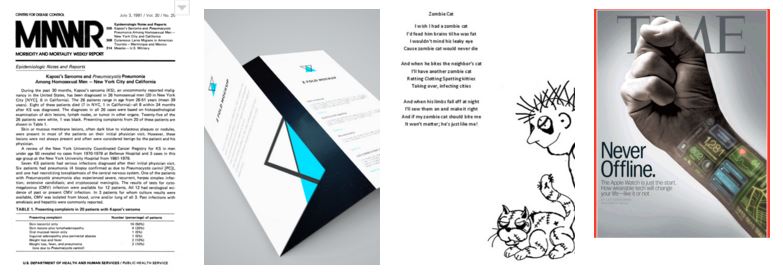 Cliche, but true: when you go to an interview dressed in correct business attire, you are taken more seriously. In fact, the expectation is so strong that if you don’t dress correctly, it’s noted immediately, whereas when you dress correctly, nothing appears to happen. Lack of verbalization does not imply lack of inference: impressions were formed predicting the likelihood that you’ll meld with company culture.
Cliche, but true: when you go to an interview dressed in correct business attire, you are taken more seriously. In fact, the expectation is so strong that if you don’t dress correctly, it’s noted immediately, whereas when you dress correctly, nothing appears to happen. Lack of verbalization does not imply lack of inference: impressions were formed predicting the likelihood that you’ll meld with company culture.
The same is true with text.
Readers makes judgments about content based on how a paper looks, on how well the visual design matches the reader’s expectations of form. Content professors expect to see text dressed in those forms, too; more importantly, they have learned how to understand information as it occurs in those forms. But they are conflicted. Professors suspect you don’t know the forms, yet imagine that you’ll try to follow them based on modeling. However, if the professor hasn’t ensured students have excellent, annotated models to follow that represent what they want, chances are high that they will not get from students what they hoped.

Thus, a text is a tale of two parts: content and form. In the Assignments Pathway, we start with the major types of publications found in the academic literature, and explain both the kind of information that should be included (content) and the document design that directs the reader’s journey through the content (form). To get started, click the paper you need to write from the list below or the drop-down menu above.